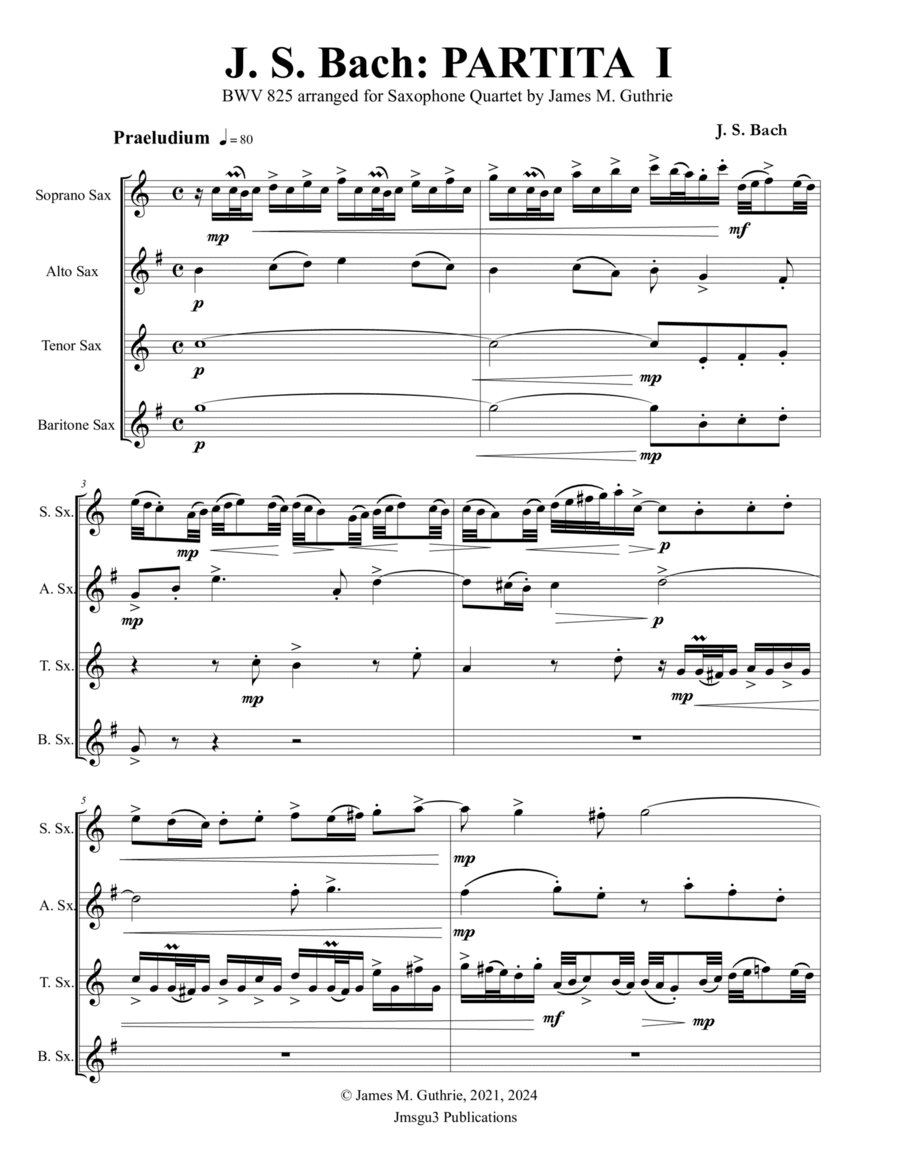Saxophone Quartet,Woodwind Ensemble Alto Saxophone,Baritone Saxophone,Soprano Saxophone,Tenor Saxophone - Level 4 - Digital Download SKU: A0.1430706 Composed by Johann Sebastian Bach. Arranged by James M. Guthrie. Baroque,Chamber,Contest,Festival,Historic,Standards. 44 pages. Jmsgu3 #1011205. Published by jmsgu3 (A0.1430706). BACH: Partita No. 1 BWV 825. Contents: Praeludium, Allemande, Courante, Sarabande, Menuet I, Menuet II, Gigue. Johann Sebastian Bach's Partita No. 1 in B-flat Major, BWV 825, is a highly significant and influential work for several reasons: It is part of Bach's monumental Clavier-Übung (Keyboard Practice), a collection of some of his greatest keyboard works published in 1731. The Partitas were groundbreaking compositions demonstrating Bach's mastery of counterpoint, harmony, and keyboard technique. Bach referred to the Partitas as his Opus 1, indicating their importance as his first major published keyboard work aimed at refreshing the spirits of music lovers. The Partita No. 1 was the first of the set, published in 1726 and dedicated to a newborn prince. The work expanded the traditional Baroque Partita form by adding a Prelude and two Minuets, showcasing Bach's innovative compositional approach. Each dance movement is a masterful example of its style, from the virtuosic Praeludium and Gigue to the expressive Sarabande. It profoundly influenced subsequent composers and established Bach as a keyboard music pioneer. The Partitas' technical demands and musical depth set new standards for the genre. So, Bach's Partita No. 1 is a seminal work that exemplifies his genius as a composer, innovator, and keyboard master, making it one of the most important compositions in the Baroque era and the history of Western music.
